LG CX OLED vs. Samsung Q90T QLED: Is OLED or QLED king?
This LG CX OLED vs. Samsung Q90T QLED face-off will help you decide which TV is best for you
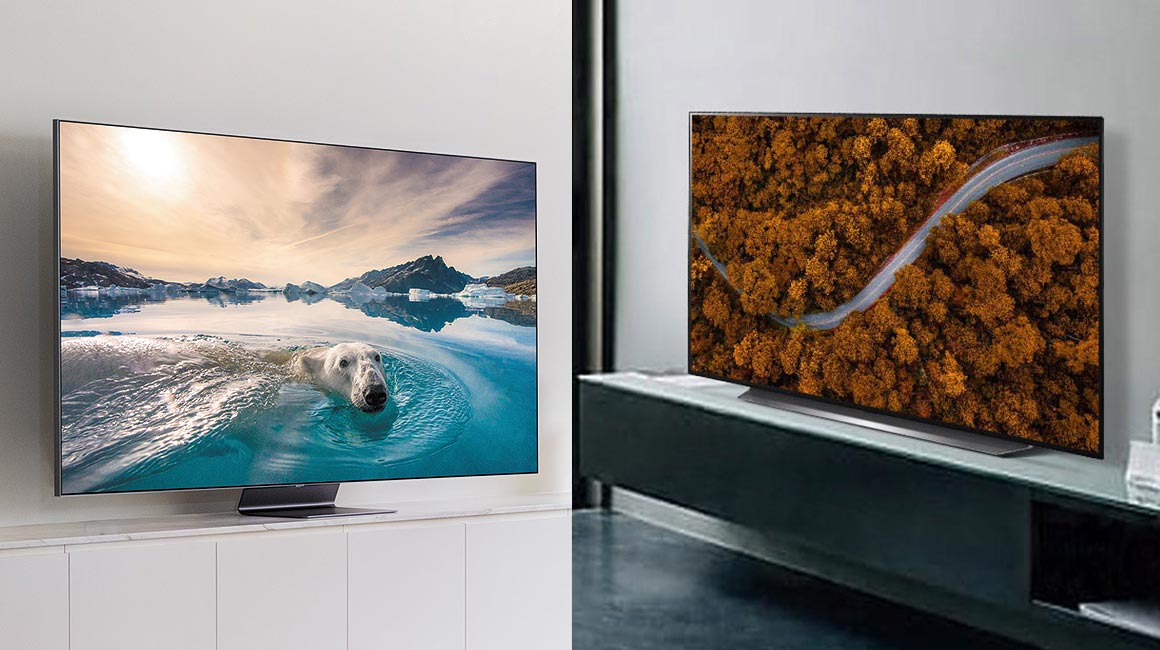
Facing off the LG CX OLED vs. Samsung Q90T QLED is the best way to make sense of the current TV alphabet soup. On one hand the LG CX is the best TV we tested this year, but Samsung’s quantum dot screen technology impresses time and time again.
Both the LG CX OLED and Samsung Q90T QLED cost a good chunk of change — $2,499 and $2,699 for 65-inch models, respectively — so you’ll want to make sure you’re getting the right set for you.
- The best TVs right now
- 2020 ATP Finals live stream: Djokovic and Nadal in action
- Just in: OnePlus is losing exactly what made it special
While both of these sets are excellent in their own right, they have unique advantages when it comes to design, smart features, gaming and, most importantly, picture quality. Despite the closeness in branding, OLED and QLED panels perform differently. This LG CX OLED vs. Samsung Q90T QLED face-off lays out whether one is a clear winner (and which you should get during Black Friday TV deals.)
LG CX OLED vs. Samsung Q90T QLED: Specs Compared
| Row 0 - Cell 0 | LG CX OLED | Samsung Q90T QLED |
| Price range | $1,499 - $4,999 | $1,499 - $4,499 |
| Screen sizes | 48”, 55”, 65” and 77” | 55”, 65”, 75”, and 85” |
| Resolution | 4K UHD (3840 x 2160) | 4K UHD (3840 x 2160) |
| Supported formats | Dolby Vision, HDR10, HLG | HDR10, HLG |
| Refresh rate | 120Hz | 120Hz |
| Ports | 4x HDMI 2.1 | 3x HDMI 2.0. 1 HDMI 2.1 |
| Audio | 2.2 channel sound | 4.2.2 channel sound |
| Smart TV software | webOS 5.0 | Tizen OS |
| Processor | α9 Gen 3 AI Processor 4K | 4K Quantum processor |
| Voice assistant | ThinQ AI, Amazon Alexa, Google Assistant | Bixby, Amazon Alexa, Google Assistant |
LG CX OLED vs. Samsung Q90T QLED: Price and size options
When it comes to the price and size options for LG’s OLED and Samsung’s QLED, these sets are pretty even, although LG has a slight edge. Neither set comes cheap, and you get the 55-inch version of both for $1,799, but LG has a softer starting price of $1,499 for the smallest screen.
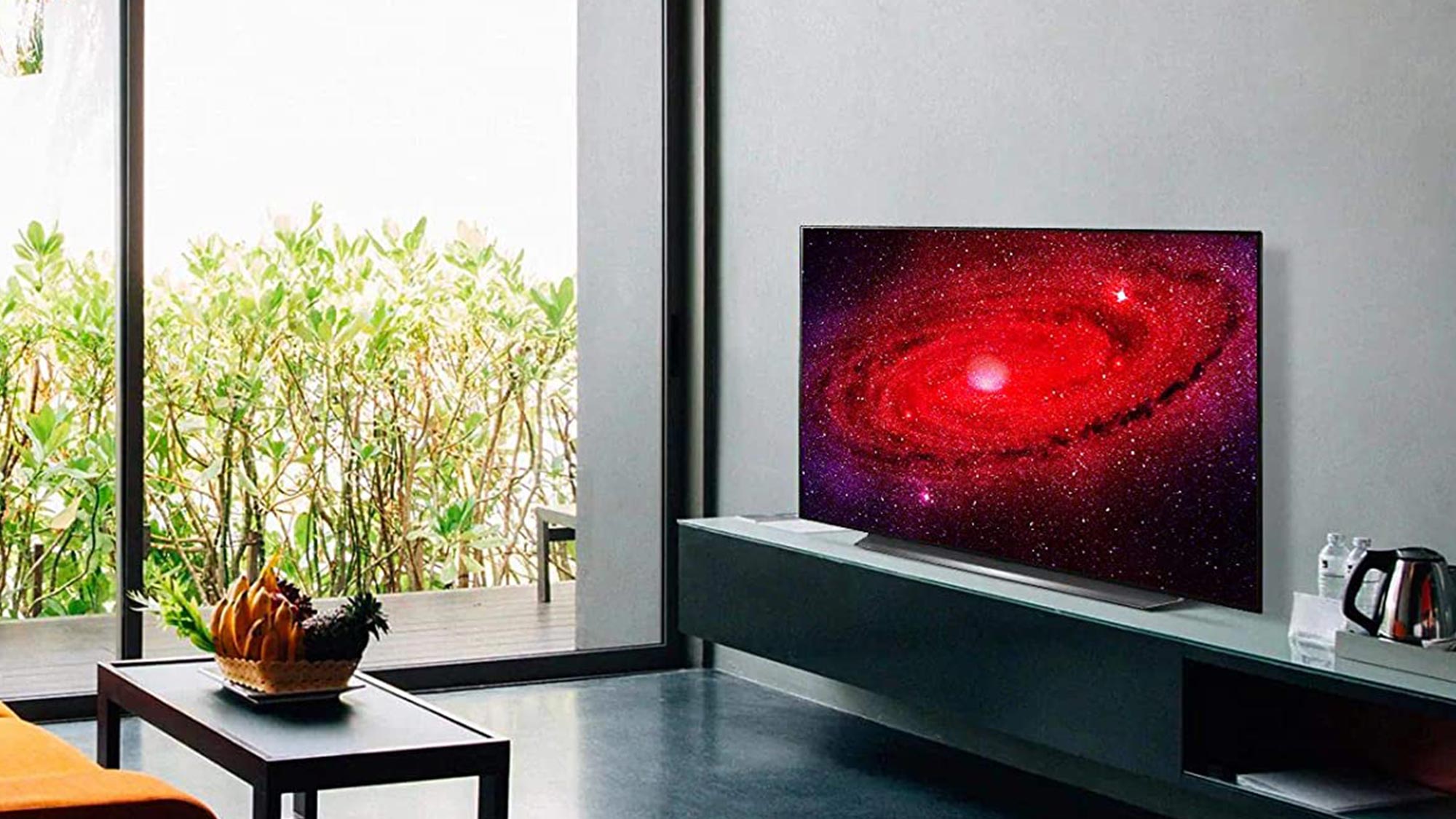
The LG CX OLED is available in 48-, 55-, 65- and 77-inch sizes, while the Samsung Q90T QLED is available in 55-, 65-, 75- and 85-inch sizes. If you’re sure you want a set under 50 inches or a set over 80 inches, you’re limited to one brand or the other. If you’re unsure, our guide to what size TV size should you buy can help.
| Row 0 - Cell 0 | LG CX OLED | Samsung Q90T QLED |
| 48-inch | $1,499.99 | N/A |
| 55-inch | $1,799.99 | $1,799 |
| 65-inch | $2,499.99 | $2,699 |
| 75-inch | N/A | $3,799 |
| 77-inch | $4,999.99 | N/A |
| 85-inch | N/A | $5,299 |
LG CX OLED vs. Samsung Q90T QLED: Design
The LG CX OLED and Samsung Q90T QLED are both sleek looking, premium TVs. When it comes to universally modern TV aesthetics, the CX and Q90T are the crème de la crème.
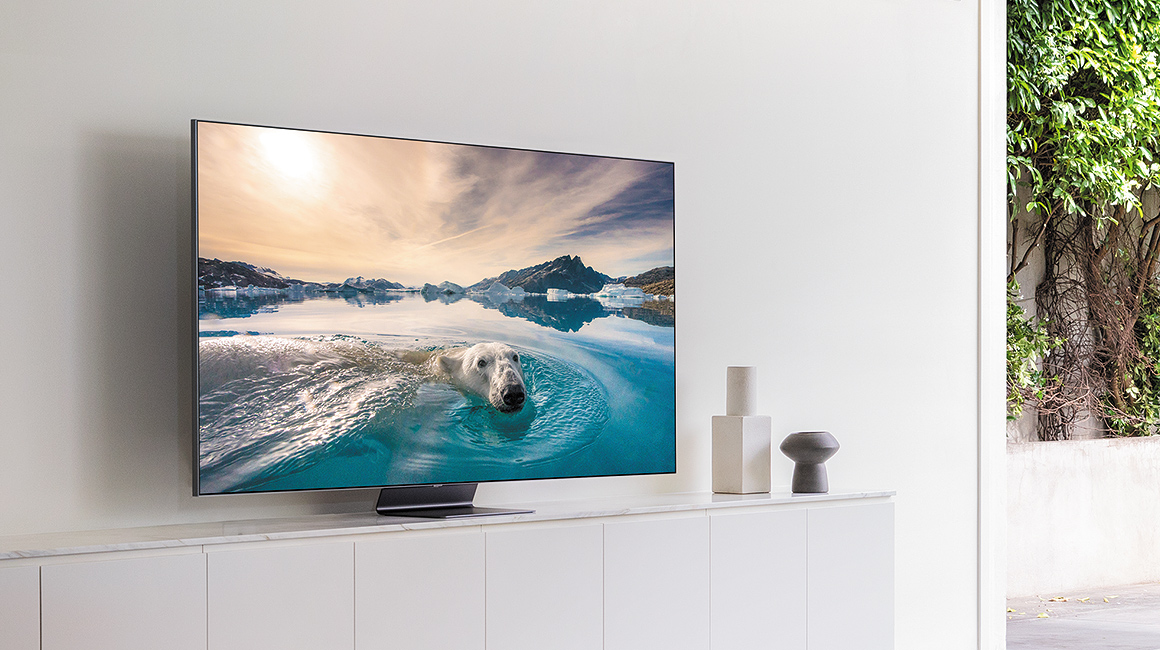
Rather than employing a set of feet on either end of their TVs, LG and Samsung both opted for a central, singular stand. The Q90T’s has a smooth curve, while the CX’s is more wedge-shaped to optimize audio output.
Sign up to get the BEST of Tom's Guide direct to your inbox.
Get instant access to breaking news, the hottest reviews, great deals and helpful tips.
The most obvious difference in terms of design between LG CX OLED vs. Samsung Q90T QLED is the OLED’s amazingly thin panel. It’s a distinctive feature of OLED TVs, but no less breath-taking when you see it in action. The only downside is how the housing component bumps out on the back, preventing a flush wall mount for the CX. If you plan to mount your new TV, you might prefer the Samsung Q90T QLED’s wall-flush design.
LG CX OLED vs. Samsung Q90T QLED: Picture quality and performance
We use the Tom’s Guide TV testing protocol to determine the performance of every unit we review, but in the case of top-shelf models like LG CX OLED and Samsung Q90T QLED ( both of which use a variety of upscaling techniques to deliver crisp images,) it’s important to start off by breaking down the OLED vs. QLED panel differences.
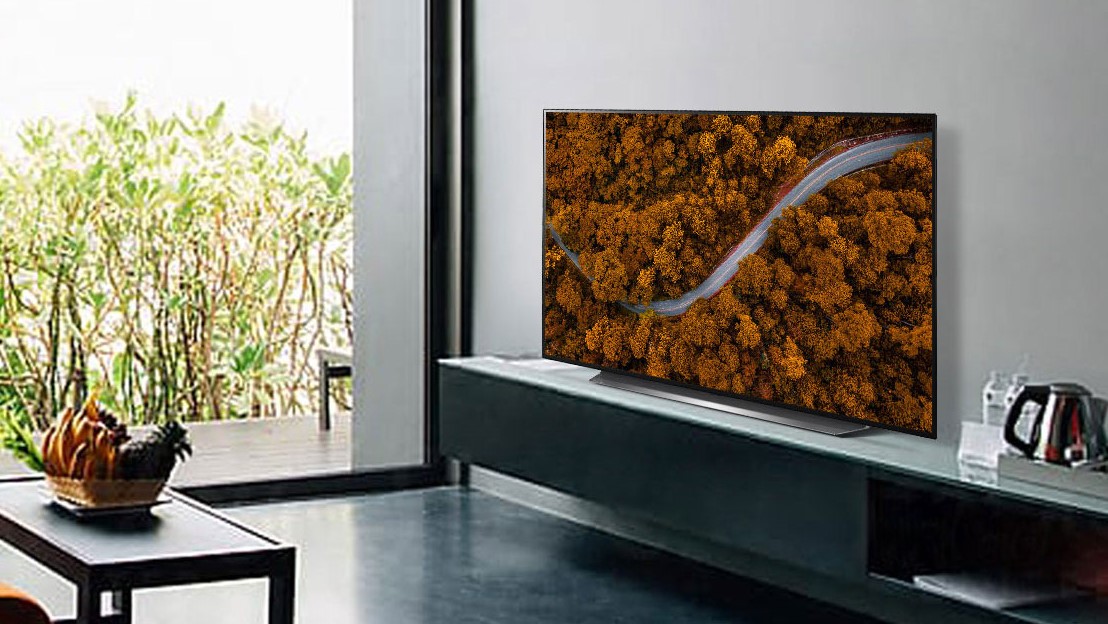
OLED panels release light on a pixel-by-pixel basis, meaning electricity is only sent to the pixels that need it at any given time. The result is realistic, deep blacks in the parts of a picture that are truly black. The LG CX OLED is especially adept at delivering head-turning levels of contrast thanks to the absence of leaky backlights.
Sounds awesome, right? Well, not always. Brightness tends to suffer on OLED panels. If you prefer the brightest, most vibrant picture, QLED (Q for Quantum dot) is the better technology for you. The backlight creates an ultra-colorful picture that holds up well off-angle and when there’s natural light in the room. You might experience some inconsistency with vignetting or blooming with QLED, but at least you’re safe from the fearsome (yet rare) OLED burn.
One thing to note is that the Samsung Q90T QLED doesn't support Dolby Vision content like the LG CX OLED. If you’ve never paid mind to Dolby Vision, then this won’t matter to you. But if you’re a fan of the cinematic TV format, you’ll notice its absence.
LG CX OLED vs. Samsung Q90T QLED: Audio
Samsung upped the audio game of its sets this year, but is it enough to challenge LG’s top-notch sound capabilities? For one, both sets now have the ability to adjust sound automatically to suit the sound of the room. Samsung’s TV will even raise the volume if it picks up on nearby ruckus.
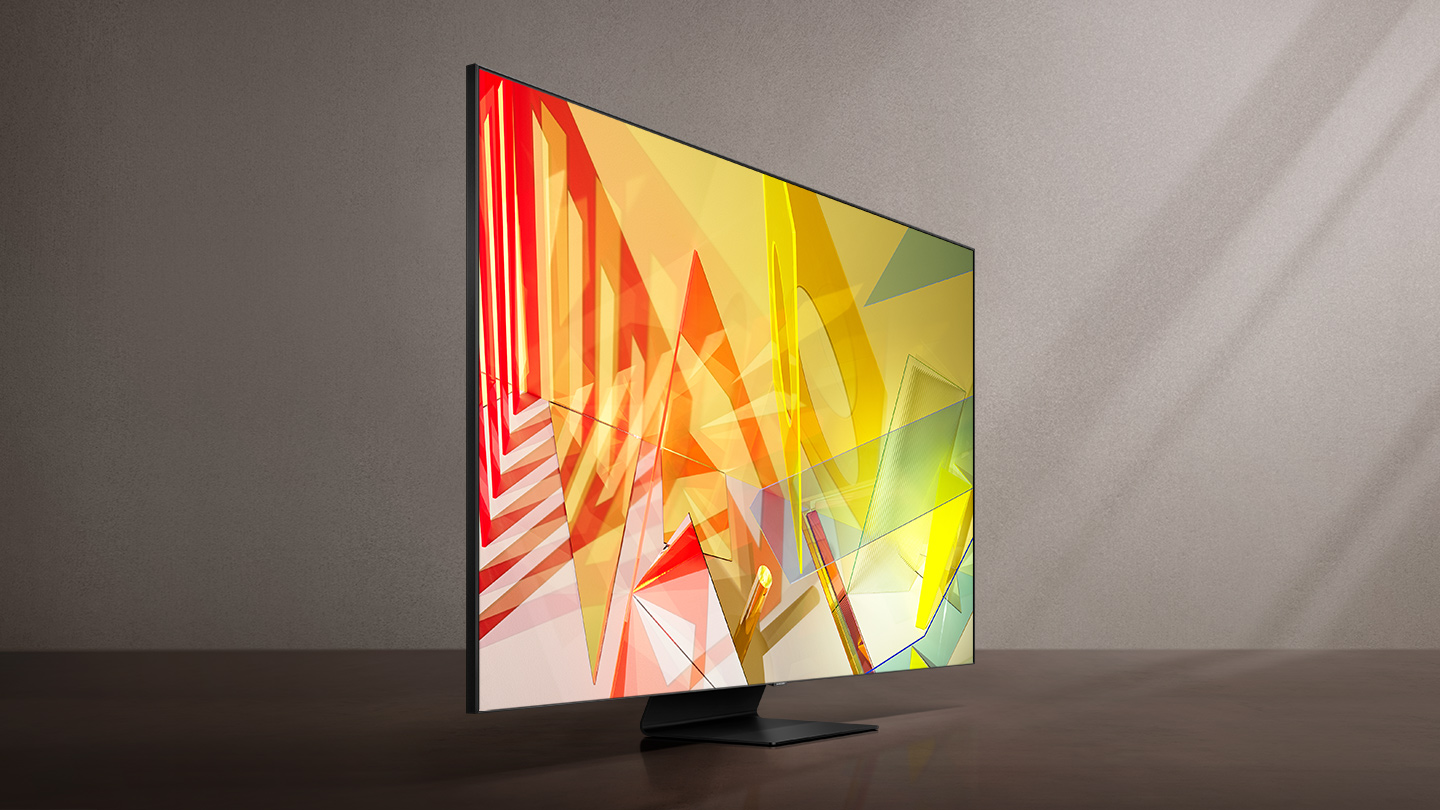
With its newest TVs Samsung also introduced a clever audio feature called Object Tracking Sound. In order to match the content on-screen, the TV takes advantage of upward and downward-firing speakers to offer a more immersive soundscape. It's effective when you hear it in-person.
But Object Tracking Sound is not for everyone. In fact, LG’s preset sound modes could be better in terms of suiting material. Despite the lack of space for conventional speakers, the LG CX OLED’s blend of tuning and modes result in a well-balanced sound no matter the space or content.
Personal preferences here will vary, however. You could always pair your new TV with one of the best soundbars, too.
LG CX OLED vs. Samsung Q90T QLED: Interface and smart features
Instead of implementing a third-party smart TV platform like Roku TV or Android TV, the LG CX OLED and Samsung Q90T QLED each use proprietary interfaces.
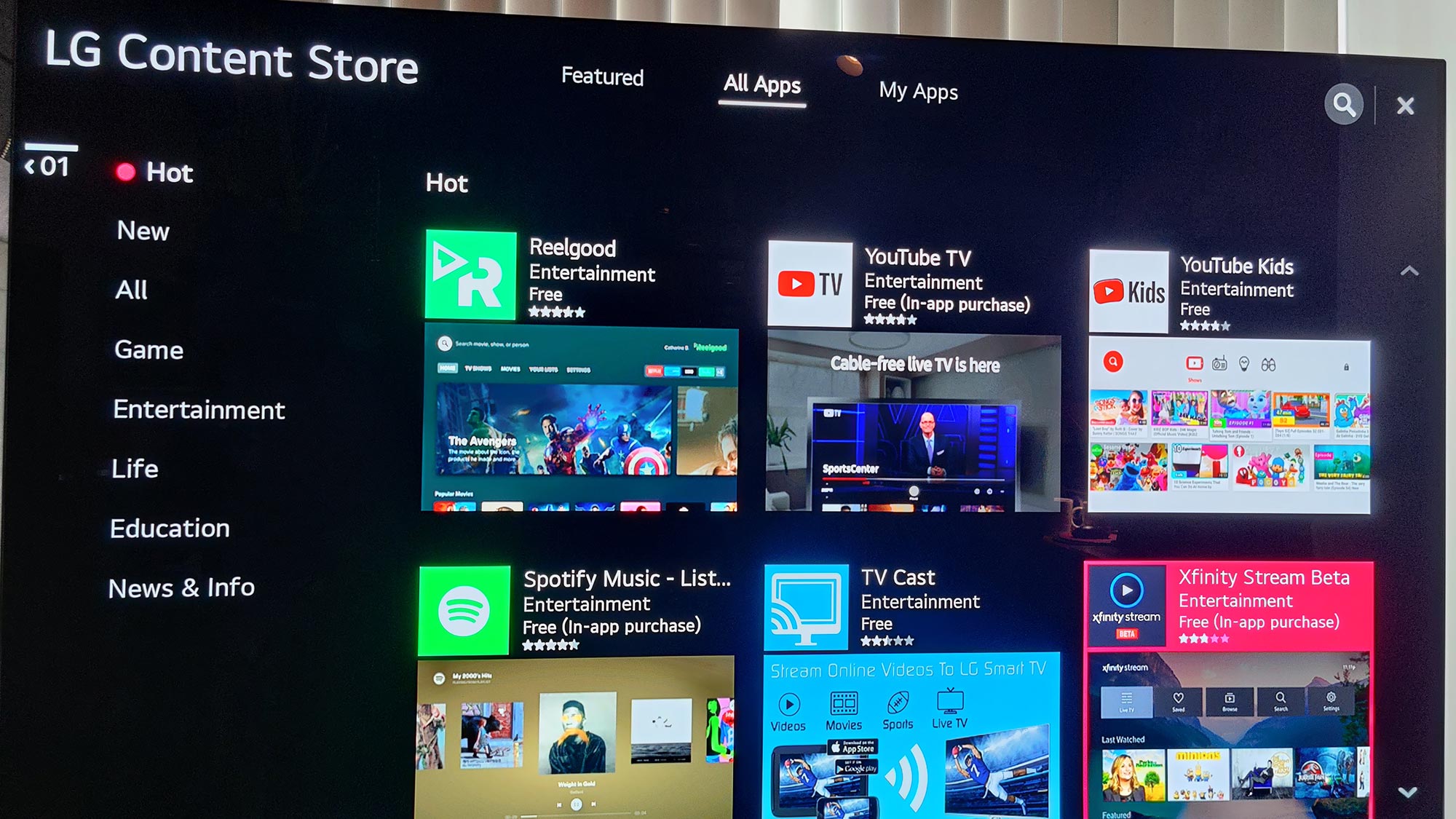
Samsung Tizen and LG WebOS are both capable smart tv platforms that give you access to your favorite streaming services, whether you want to watch Disney Plus with the family, catch Thursday Night Football on Prime Video or have cut the cord with Sling TV. There are a number of music channels at your disposal on each OS as well.
Last year, Samsung lacked in this category thanks to Bixby. This year, luckily, Samsung TVs also work with Amazon Alexa and Google Assistant. Bixby isn’t that terrible, but it’s lacking compared to the ubiquity of the two most popular smart home assistants.
LG has its own voice assistant for searching content and TV control, but supports Alexa and Google Assistant for smart home control, too. Support for these assistants lets you integrate your set into your smart home system and your smart home routines. If you’re smart home savvy, you can’t go wrong with either of these TVs.
LG CX OLED vs. Samsung Q90T QLED: Gaming
Those who don’t care about gaming can skip down to the final results, but we figured you’d might be interested in learning whether the LG CX OLED or the Samsung Q90T QLED is a better companion for your new Xbox Series X or PS5. Now that the next-generation consoles have arrived, you’ll want to pair them with a TV that does all those gorgeous graphics justice. And one that offers speedy response times, too, of course.
The Samsung Q90T QLED doesn’t have an array of HDMI 2.1 inputs like the LG CX OLED, but it does have 4K 120 Hz gaming, variable refresh rates and an auto-low latency gaming mode that limits input lag and should give you an extremely responsive experience. It also supports AMD FreeSync, but not Nvidia G-Sync.
Meanwhile, the CX OLED’s 4 HDMI 2.1 inputs can handle any periphery you plan to plug in. It has all the same pertinent features as the Q90T, plus it supports G-Sync in addition to FreeSync. That’s not a deal breaker for your new console, but it matters to PC gamers.
LG CX OLED vs. Samsung Q90T QLED: Which TV wins?
If you’ve found yourself choosing between the LG CX OLED vs. Samsung Q90T QLED, you’re in a great position. Both sets are among the best you’ll find right now, and will feel like a major upgrade over anything you own. You won’t be disappointed by the appearance, sound or gaming capabilities of either.
But get the LG CX OLED if you want to recreate the cinema experience in your home. OLED’s inky blacks can’t be beat, making every upcoming movie night memorable. Not to mention, it’s the only one of these two sets that supports Dolby Vision.
That said, the Samsung Q90T QLED is a better choice if you don’t mind ditching Dolby Vision and plan to put the TV in a room with lots of natural light. Its well-rounded picture and excellent brightness will hold up no matter the time of day. Yes, even on that massive 85-inch screen option.
Kate Kozuch is the managing editor of social and video at Tom’s Guide. She writes about smartwatches, TVs, audio devices, and some cooking appliances, too. Kate appears on Fox News to talk tech trends and runs the Tom's Guide TikTok account, which you should be following if you don't already. When she’s not filming tech videos, you can find her taking up a new sport, mastering the NYT Crossword or channeling her inner celebrity chef.

